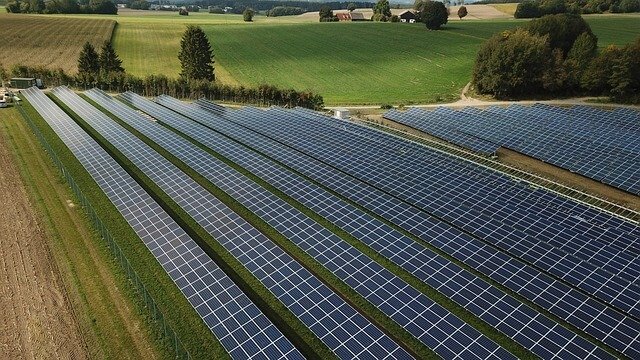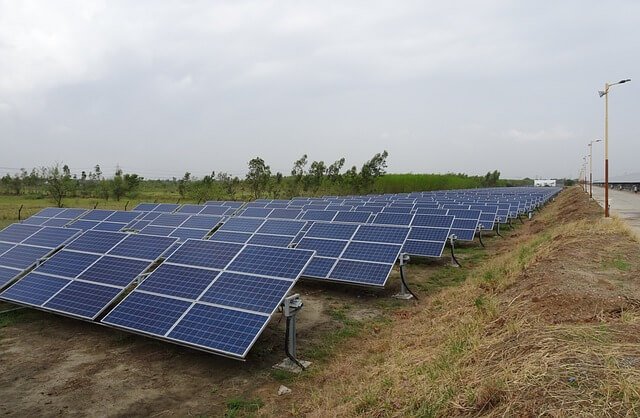March 5, 2023
Published by Sanaya Sharma on March 5, 2023
Categories
Most of us think about solar energy companies in India when we discuss renewable energy. As they say, there is more to it than meets the […]
March 5, 2023
Published by Sanaya Sharma on March 5, 2023
Categories
It is a saying that the proof of the pudding is in the eating. An increasing number of solar energy companies in India has come a […]
March 5, 2023
Published by Sanaya Sharma on March 5, 2023
Categories
The rapid expansion of urbanization and industry drives an increase in electricity consumption, resulting in a significant demand to renew power. An electric power generation station […]
March 5, 2023
Published by Sanaya Sharma on March 5, 2023
Categories
You just made the decision to switch to solar power, and after doing some research, you know what kind of panels you like best with top […]
March 5, 2023
Published by Sanaya Sharma on March 5, 2023
Categories
A solar power plant in India gets its energy from the sun. One can use abundant and renewable sunlight to power their homes and businesses. Installing […]
March 5, 2023
Published by Sanaya Sharma on March 5, 2023
Categories
It is a readily available energy source and a renewable energy source on Earth. Vast Solar energy in India has been utilized by humans since ancient […]
March 5, 2023
Published by Sanaya Sharma on March 5, 2023
Categories
Actually, solar companies in India are photovoltaic companies that offer complete services like consultative sales, system design, equipment procurement, project management, solar panel installation, and dependable […]
March 5, 2023
Published by Sanaya Sharma on March 5, 2023
Categories
When making energy-related decisions with the environment in mind, wind energy‘s advantages must be taken into account. In a greener future, a range of energy sources, […]
March 5, 2023
Published by Sanaya Sharma on March 5, 2023
Categories
Solar panels and wind turbines are becoming increasingly commonplace. Why then? How do renewable energy sources benefit our health, the environment, and the economy? The following […]
March 5, 2023
Published by Sanaya Sharma on March 5, 2023
Categories
The energy generated by the sun is called solar energy and can be used to generate heat or electricity. It’s free, and thanks to technological advancements, […]
November 28, 2022
Published by Sanaya Sharma on November 28, 2022
Categories
Switching towards the world of renewable energy like solar power ability is now a booming phase not just in India, but worldwide. More countries are now becoming part […]
November 28, 2022
Published by Sanaya Sharma on November 28, 2022
Categories
Some studies have found that much like solar power ability, there is a growing demand for green hydrogen to work into. A novel and green method of […]
November 28, 2022
Published by Sanaya Sharma on November 28, 2022
Categories
Right now, there are sheers of renewable energy available for farmers and clean energy advocates from the government. The sheets are talking about solar power and other renewable […]
November 28, 2022
Published by Sanaya Sharma on November 28, 2022
Categories
Confronted with the deteriorating climate change that results from the use of fossil fuels, there has been a transition towards renewable energy like solar power ability, which […]
November 28, 2022
Published by Sanaya Sharma on November 28, 2022
Categories
India is facing a crisis due to the high electric bills and global warming. As India is a developing nation that is why it must think […]
November 28, 2022
Published by Sanaya Sharma on November 28, 2022
Categories
There is nothing to deny the fact that solar power panels are essential in the generation of the grid. It has several utilities and serves in […]
November 28, 2022
Published by Sanaya Sharma on November 28, 2022
Categories
Solar energy or solar power is the renewable source in the world. Solar power ability has the technology for converting the heat and light of the […]
November 28, 2022
Published by Sanaya Sharma on November 28, 2022
Categories
In layman’s terms, renewable energy is targeted as electricity generated by fuel sources. These are designed to restore themselves over a shorter period and won’t diminish. […]



















